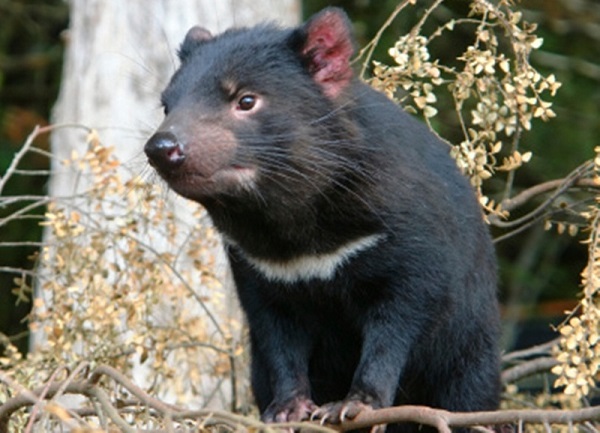Sydney, (Asian independent) Researchers studying one of Australia’s most elusive native animals, Tasmanian devils, have discovered they have an eating habit which “breaks the laws” of scavengers.
Professor Tracey Rogers from the University of New South Wales’ (UNSW) School of Biological, Earth and Environmental Sciences said that unlike all other scavengers, which “feed on whatever is available, whenever it’s available”, the animals are “picky”.
In a study, published on Wednesday in the scientific journal Ecology and Evolution, Rogers’ team analyzed the eating habits of about 70 devils throughout Australia’s island state of Tasmania, Xinhua news agency reported.
They tracked the nocturnal carnivores by analyzing a whisker from each devil. The bristles hold distinctive chemical imprints from what they have eaten.
Only about 10 per cent ate whatever was available with most sticking to their favourite foods including native marsupials such as wallabies and possums or native birds such as rosellas.
“It’s a scavenger’s job to just be a generalist and take whatever it can find,” Rogers said. “But we found most Tasmanian devils are selective eaters — they’ve broken the laws of scavenging.”
The researchers believe the devils’ fussiness could be due to their privileged position in their isolated hunting grounds.
“If you’re a scavenger in Africa, then you’re competing with all these other predators,” Rogers said. “But in Tasmania, there aren’t any other predators or competition for carcasses. Their main competition is just each other.”
The team found the heaviest devils also tended to be the pickiest. This could mean the animal’s size is a driving factor in its choice of food, or that specializing in certain foods could make a devil gain weight.
Tasmanian devil numbers have plummeted since the 1990s when a highly contagious disease, devil facial tumor disease (DFTD), decimated their numbers.
DFTD has a high mortality rate — if a devil brings it into their colony, it’s likely to wipe out more than 75 per cent of their population within five years.
Conservation groups have subsequently tried to minimize the spread of DFTD by keeping some populations in captivity until it is safer to release them.
The researchers hope their dietary study might help these groups determine how to best care for the marsupials.
Their next project is to take a closer look at why devils make certain dietary choices — for example, are they selecting food consciously, opting for foods other devils aren’t interested in, or simply choosing foods that are most in abundance?
“We would look at why devils are tending towards certain foods, like pademelons and possums, and whether humans have a role to play in this specialisation,” Rogers said.








